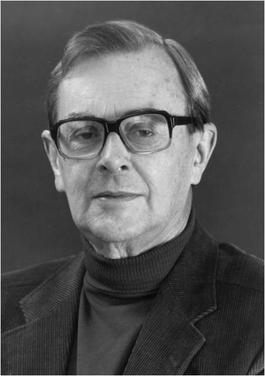Brian Pippard
British physicist (1920–2008) From Wikipedia, the free encyclopedia
Sir Alfred Brian Pippard, FRS (7 September 1920 – 21 September 2008),[1] was a British physicist. He was Cavendish Professor of Physics from 1971 until 1982 and an Honorary Fellow of Clare Hall, Cambridge, of which he was the first President.
Brian Pippard | |
|---|---|
 Brian Pippard | |
| Born | 7 September 1920 Earl's Court, London, England |
| Died | 21 September 2008 (aged 88) Cambridge, England |
| Alma mater | Clare College, Cambridge |
| Father | Alfred Pippard |
| Awards | Fellow of the Royal Society Hughes Medal (1960) Holweck Medal (1961) Heineman Prize (1969) Onsager Medal (2005) |
| Scientific career | |
| Institutions | University of Cambridge |
| Notable students | Brian David Josephson John Shepherd John Clarke |
| 1st President of Clare Hall, Cambridge | |
| In office 1966–1973 | |
| Succeeded by | Sir Robert Honeycombe |
Biography
Summarize
Perspective
Pippard was born in London in 1929 and his father was the engineer Alfred Pippard.[2] He was educated at Clifton College[3] and Clare College, Cambridge, where he graduated with MA (Cantab) and PhD degrees.
After working as a scientific officer in radar research during the Second World War, he was appointed as a Demonstrator in Physics at the University of Cambridge in 1946, subsequently becoming a Lecturer in the subject in 1950, a Reader in 1959, and the first John Humphrey Plummer Professor of Physics a year later. In 1971 he was elected Cavendish Professor of Physics.[4]
Pippard demonstrated the reality, as opposed to the mere abstract concept, of Fermi surfaces in metals by establishing the shape of the Fermi surface of copper through measuring the reflection and absorption of microwave electromagnetic radiation[5] (see the anomalous skin effect[6]). He also introduced the notion of coherence length in superconductors in his proposal for the non-local generalisation of the London equations[7][8] concerning electrodynamics in superfluids and superconductors. The non-local kernel proposed by Pippard,[9][10][11] inferred on the basis of Chambers' non-local generalisation of Ohm's law) can be deduced within the framework of the BCS (Bardeen, Cooper and Schrieffer) theory of superconductivity[12] (a comprehensive description of the details of the London–Pippard theory can be found in the book by Fetter and Walecka[13]).
Pippard was the author of Elements of Classical Thermodynamics for Advanced Students of Physics,[14] Dynamics of Conduction Electrons,[15] and The Physics of Vibration.[16] He also co-authored the three-volumes encyclopaedia Twentieth Century Physics.[17]
As the Cavendish Professor of Physics at Cavendish Laboratory, University of Cambridge, he compiled Cavendish Problems in Classical Physics,[18] based in large part on past examination questions for Cambridge physics students.
Pippard was the doctoral supervisor of Brian David Josephson (awarded PhD in Physics in 1964) who in 1973 received the Nobel Prize in Physics (together with Leo Esaki and Ivar Giaever) for his discovery of what is known as the Josephson effect.[19]
References
Obituaries
External links
Wikiwand - on
Seamless Wikipedia browsing. On steroids.
